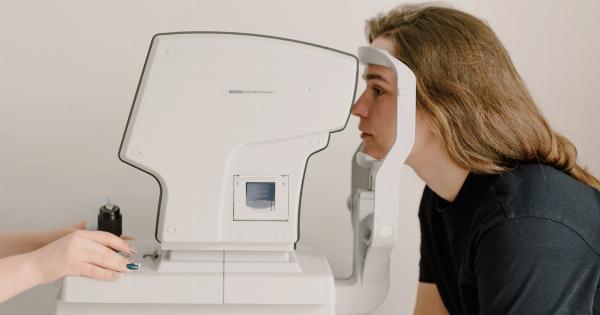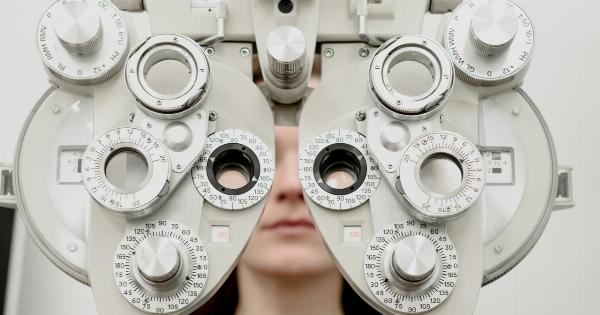In a groundbreaking medical breakthrough, an innovative self-pervasive eye procedure has successfully restored the vision of a blind Italian man.
This remarkable achievement marks a significant milestone in the field of ophthalmology and offers hope to millions of visually impaired individuals worldwide.
The Journey of Darkness to Light
Giovanni Rossi, a 40-year-old resident of Rome, Italy, had been blind since birth due to a congenital condition affecting the optic nerves.
Living in darkness all his life, he had resigned himself to a world without colors, shapes, and the wonders of visual perception.
However, everything changed when Rossi came across a news article discussing the pioneering work being conducted by Dr. Alessandro Bianchi, a renowned ophthalmologist at the Umberto I Hospital in Rome.
Intrigued and filled with hope, Rossi immediately reached out to Dr. Bianchi to explore the possibility of restoring his sight.
The Self-Pervasive Eye Procedure
Dr. Bianchi has been developing a revolutionary self-pervasive eye procedure for several years.
Unlike traditional eye surgeries that involve invasive techniques and external devices, this ground-breaking procedure utilizes a combination of nanotechnology and bioengineering to repair and regenerate damaged optic nerves.
To perform the procedure, surgeons implant tiny nano-sized devices into the patient’s eyes. These devices are equipped with AI algorithms and neural networks that can mimic the function of healthy optic nerves.
The nanobots then self-propagate and penetrate the damaged nerve tissues, effectively reconnecting the broken neural pathways.
Once the nanobots complete their task, they dissolve harmlessly within the body. The regenerated nerves take over the function of transmitting visual information to the brain, thereby restoring the patient’s sight.
The Procedure and its Success
After a thorough assessment and evaluation, Dr. Bianchi determined that Rossi was an excellent candidate for the self-pervasive eye procedure.
Undergoing a series of preliminary tests and preparations, Rossi eagerly awaited the day that would forever change his life.
The actual procedure was conducted in a state-of-the-art operating room, equipped with advanced robotic surgical systems to assist in the delicate process.
The surgeon implanted the nanodevices into Rossi’s optic nerves, ensuring proper positioning and functionality.
Following the surgery, Rossi remained under close observation to monitor his progress. As the days passed, his excitement grew, knowing that his life held the promise of a whole new dimension.
And then, on one fateful day, he opened his eyes and experienced the world in all its glory for the very first time.
From Darkness to a Vibrant World
As his vision gradually improved, Rossi marveled at the beauty surrounding him. The brilliance of colors, the complexity of shapes, and the rich tapestry of his surroundings overwhelmed him with joy.
Witnessing his own reflection in the mirror brought tears to his eyes as he realized the incredible transformation that had taken place.
Over the next few weeks, Rossi underwent intensive visual rehabilitation therapy to assist him in adapting to his newfound sense of sight.
During this period, his brain learned to interpret visual stimuli, allowing him to navigate the world with increasing ease.
Rossi’s success story soon caught the attention of the international media and ophthalmologists worldwide, who have eagerly awaited updates on his progress.
Many experts believe that this breakthrough procedure could revolutionize the treatment of blindness and other visual impairments globally.
Hope for the Future
The success of the self-pervasive eye procedure has given hope to millions of people living with visual impairments.
Researchers and medical professionals are optimistic that further advancements and refinements in this innovative technology will enable even more individuals to regain their sight.
While the procedure is currently only available for certain types of optic nerve damage, ongoing research aims to expand its application to various other conditions causing blindness, such as glaucoma, macular degeneration, and retinal detachment.
The Importance of Ethical Considerations
As with any disruptive medical technology, ethical considerations play a crucial role in its implementation. The self-pervasive eye procedure raises several ethical questions regarding consent, potential risks, and the affordability of such treatments.
Balancing these concerns with the incredible promise it holds is a challenge that the medical community is actively addressing.
Moreover, regulatory bodies across the globe are closely monitoring the development and implementation of this groundbreaking procedure, ensuring that it meets stringent safety standards and offers equitable access to those in need.
A Promising Future
The story of Giovanni Rossi, the blind Italian man who regained his sight thanks to the self-pervasive eye procedure, represents a monumental achievement in the field of ophthalmology.
With ongoing advancements and continued research, the world is inching closer to a future where blindness is no longer a permanent condition, and sight is restored to those who have never experienced it before.



























